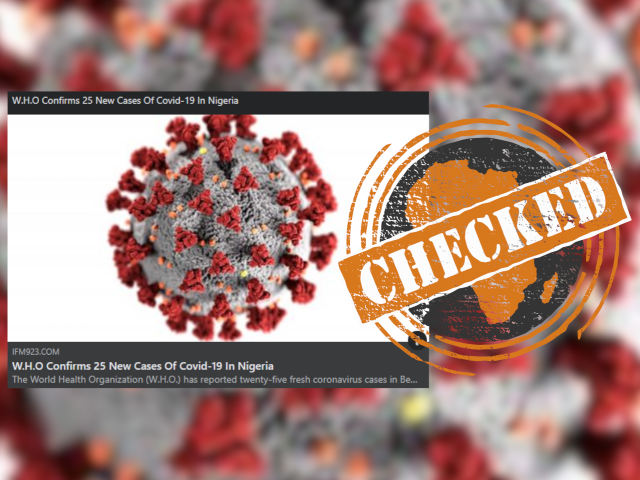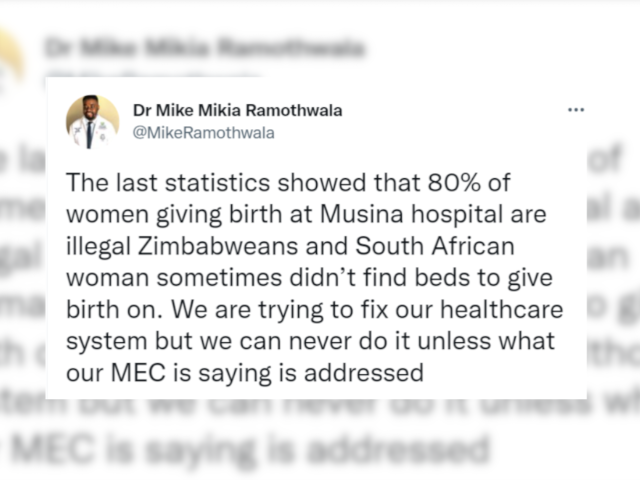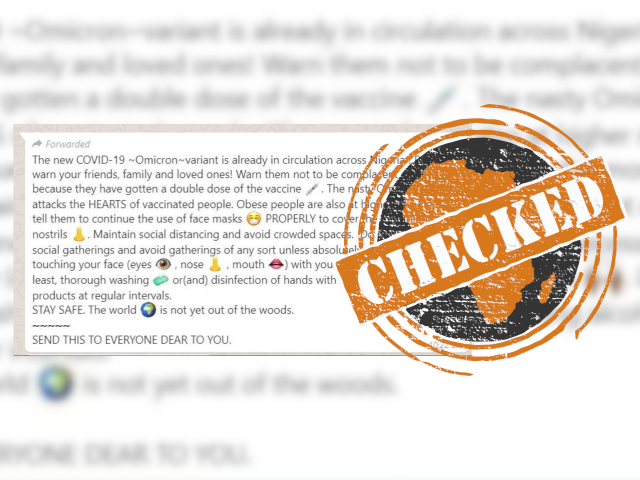While far less Covid-19 misinformation crossed our desks in 2023, other health myths, hoaxes and scams were alive and well, circulating far and wide in South Africa and around the world.
Some of these were easily debunked because there simply was no real evidence – like the idea that Epsom salts can treat burns, or that depression is caused by highs from certain foods. But others seemed to have research behind them, at least at first glance.
When I delved deeper into these claims, I noticed a more pernicious trend – many health claims relied on the appearance of scientific evidence, using legitimate research to draw conclusions.
False claims like these are particularly difficult to spot because they rely on the public not having the scientific knowledge needed to understand the technical academic writing in journal publications – if they can get past publisher paywalls in the first place.
The trend is easier to identify (and like the actual plague, to avoid) using examples. Here are some particularly convoluted health myths I looked into in 2023:
- If you strengthen your immune system with herbal remedies, HIV can’t survive in the body
- “Earthing”, the practice of being in direct contact with the ground, can cure disease
- Herbal supplements can cure cancer by detoxifying the body and balancing the body’s pH levels
These claims all gave the impression of being backed by science. For example, the group selling a remedy for HIV claimed to be run by “independent researchers” who had done “several years of research”.
The earthing movement is also backed by extensive “research”, complete with a dedicated US-based Earthing Institute and a star-studded, feature-length documentary detailing its findings. The supplement promoted as a cancer cure referred to studies that linked its long list of herbal ingredients to the treatment of various illnesses.
And these studies do exist, sometimes in legitimate, peer-reviewed journals, and at first glance might look like they support these claims. But it’s not that simple. Let’s take the example of “earthing” to see why.
Earthing: a medicine with its feet on the ground?
I initially thought the concept of earthing was a fringe idea, but quickly realised that the industry is alive and well, with several wellness websites selling countless products (e.g here, here, here, here, here, here, and here) such as mats, patches, and bedding that all promise to help you… be on the ground better?
Listed on Wikipedia as a form of energy medicine, proponents of earthing claim that our bodies should be in direct contact with the Earth, without modern comforts such as shoes and hard floors, to prevent or cure illness. The idea is that this contact balances electrical charges in the body and neutralises the “free radicals” - unstable cells that can cause inflammation and illness.
The Earthing Institute promotes information “proving” the health benefits of the practice. Its board includes some serious-looking academics, each with multiple university degrees. And their names appear on some of the research papers published on the subject – more on that later.
A study isn’t a study isn’t a study: research methods matter
Research on earthing isn’t hard to find. A quick Google Scholar search turns up studies that do appear to support the health benefits of grounding. In one study, for example, participants who slept on a grounding pad had lower cortisol levels. The researchers concluded that this meant a better “alignment” with circadian rhythms (daily changes in the body, often in response to light and dark).
Another study found that participants connected to grounding patches had signs of blood thinning, leading the authors to conclude that grounding was the “simplest and yet most profound interventions for helping reduce cardiovascular risk and cardiovascular events.” In other studies, researchers concluded that grounding reduced inflammation, which led to better wound healing.
These studies may lead the public, and journalists, to believe that claims that grounding is generally beneficial and can cure disease are accurate. After all, they are published in academic journals by people with PhDs. They use terminology that seems to explain the phenomenon logically. They even have multiple review articles by researchers discussing the studies. But the existence of research into something isn’t enough to support these claims. Here’s why:
1. Randomisation, blinding and placebo control
A randomised controlled trial, or RCT, is considered the gold standard in medical research because it is the only study design that can make conclusions about cause and effect.
Although the mechanics vary, RCTs involve randomly assigning participants to an intervention group (for example, people who sleep on grounding mats) and a control group (the comparison group; here, people who sleep on identical mats except they are not ‘grounded’).
RCTs also include blinding where possible, where, for example, participants do not know whether they are sleeping on a grounded mat or not. The researchers could also be blinded. In theory, this reduces the chance of bias by accounting for the placebo or expectancy effects. This could be where people who received the grounding mat experienced an effect because they expected to.
Since grounding studies have often not been RCTs, their findings are questionable, introducing other factors that could explain the results found. And while there are a few studies that included blinding or control groups, these have various other problems, which we’ll look into next.
2. Sample size and generalisability
Sample size is the number of people or objects in a study. Medical research aims to apply the results of a study to a wider population (called generalisability), and sample size plays an important role here. Increasing sample size generally increases the likelihood that a study’s results will also apply to that population. And while there isn’t an exact ideal number, certain sizes make it likely that the findings from statistical analyses will be accurate.
Grounding studies have tended to use very small samples, often involving one or a handful of people. These sizes are so small that not only do they limit statistical analysis, but are also certainly not representative of any wider population of people, and so can’t be applied to anyone outside the study. This type of research is still important – it’s the starting point on the long road to concrete conclusions and scientific consensus – but it’s nothing more.
3. Conflicts of interest
Another well-known problem in medical research is conflict of interest. Sometimes people who fund or conduct research may have a reason for doing so that biases the results. This can affect any stage of the research process, from how a study is designed to how it is carried out and what conclusions are drawn. A particularly famous and egregious example is research funded by the tobacco industry, which was frequently designed to produce false results that underestimated the health risks of smoking. Such conflicts are often not disclosed by researchers when they publish.
In the case of grounding, the same few names and institutions crop up in the available research. These researchers are often members or owners of earthing organisations, which also appear to fund the research. This doesn’t necessarily mean that all the findings are inaccurate but it is another factor that introduces a serious risk of bias. Without independent research to corroborate it, the trustworthiness of the findings is limited.
4. Conclusion over-reach
Another issue is the mismatch between the claims made and the type of research done. Let’s go back to the claim that earthing can cure disease. Even if – and as we’ve seen, it’s an if that resides in fantasy – these studies were rigorous, double-blind, large sample RCTs, conducted by independent researchers and replicated over and over, finding the same results, they would still not support the claim that grounding treats or cures a disease. Even if studies found that grounding relaxes the body, balances circadian rhythms, thins some parts of the blood, reduces muscle damage, and improves mood, these may be indicators associated with the absence of disease or with health promotion – but they wouldn't have shown that grounding actually treats disease.
The bar for proving that something is effective in treating a disease is enormously high. Medically approved treatments go through several stages of testing, often starting out as small, uncontrolled studies, but then moving on to numerous more rigorous ones involving large, representative samples. Many of the health claims we encounter at Africa Check are based on research that falls into the category of early, pre-clinical research, often limited to animal or cell studies. Here are some examples of these claims that I’ve written about in 2023.
Science is dull and unsexy
Earthing is a particularly clear example of a mismatch between a claim and the evidence to support it, but there are many, many instances of this problem on social media, health or wellness sites and, crucially, from trusted news outlets.
The issue, as I see it, is the weaponisation of low public knowledge around the process of scientific inquiry, especially as it unfolds in health research. This often takes the form of disinformation, where false information is deliberately spread for profit, like many naturopathic remedy claims we have come across. But it can also be the result of attention economies, and the financial or other incentives of well-meaning journalists and social media users who lack adequate scientific literacy, time or motivation to pick apart evidence.
The public and the media need to be much more cautious about scientific research, and not fall into the trap of unquestioningly accepting the perceived authority of “Science”.
Science isn’t flashy. It’s notoriously dull, uncertain and unsexy. Sensational headlines, over-hyped cures and One Simple Tricks are increasingly more profitable and accessible than real research. Until the public can tell the difference, we will remain vulnerable to health claims and conspiracies that at best don’t work, and at worst endanger our lives and those around us.





Add new comment